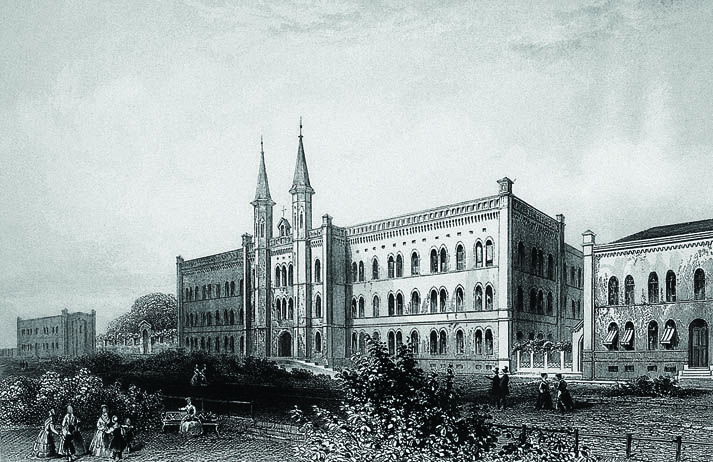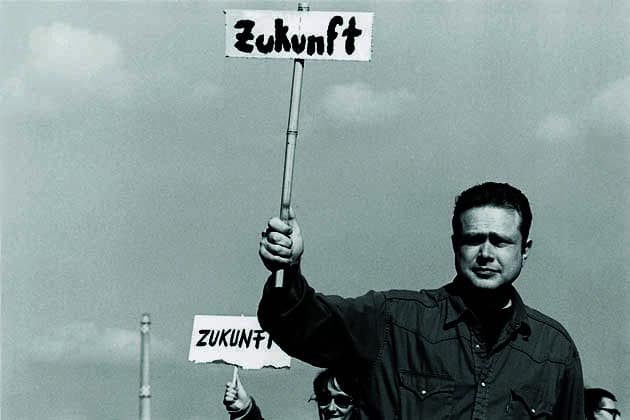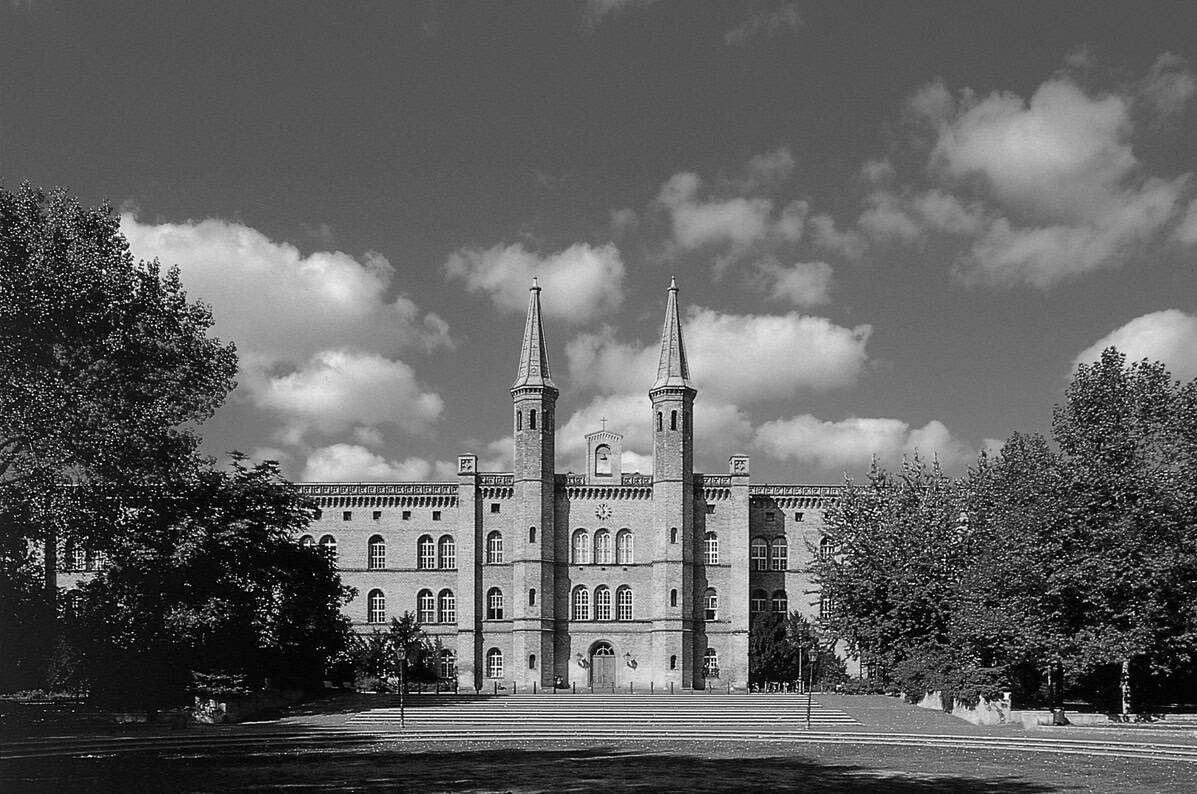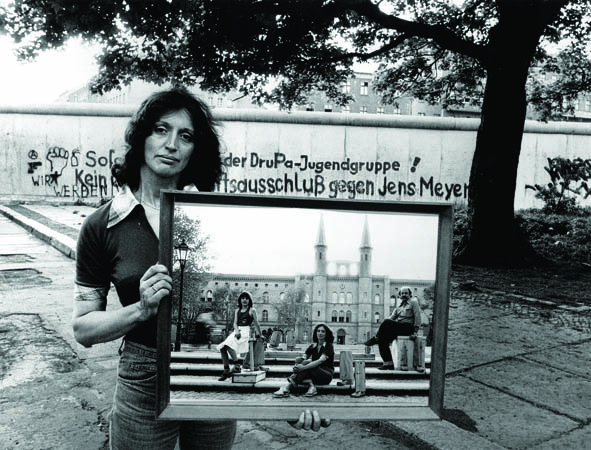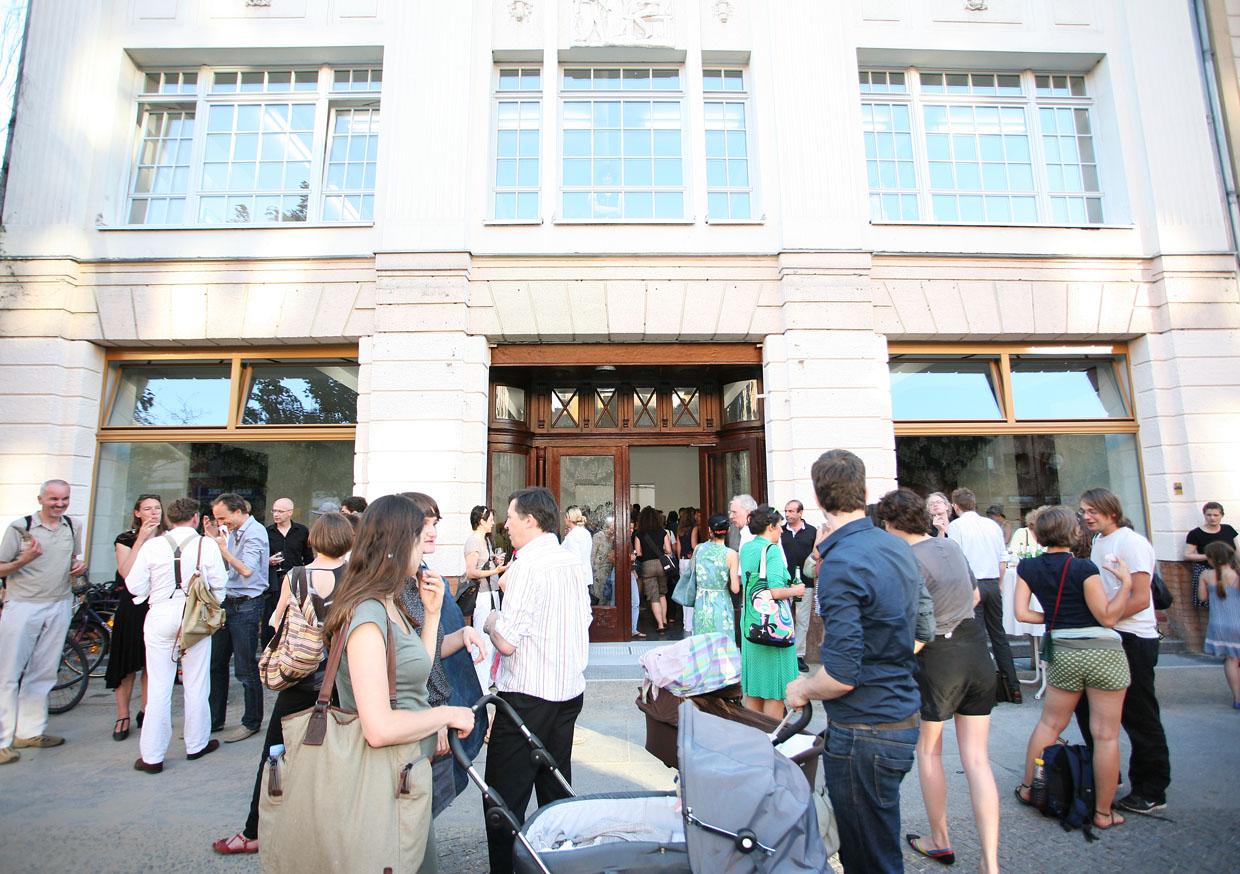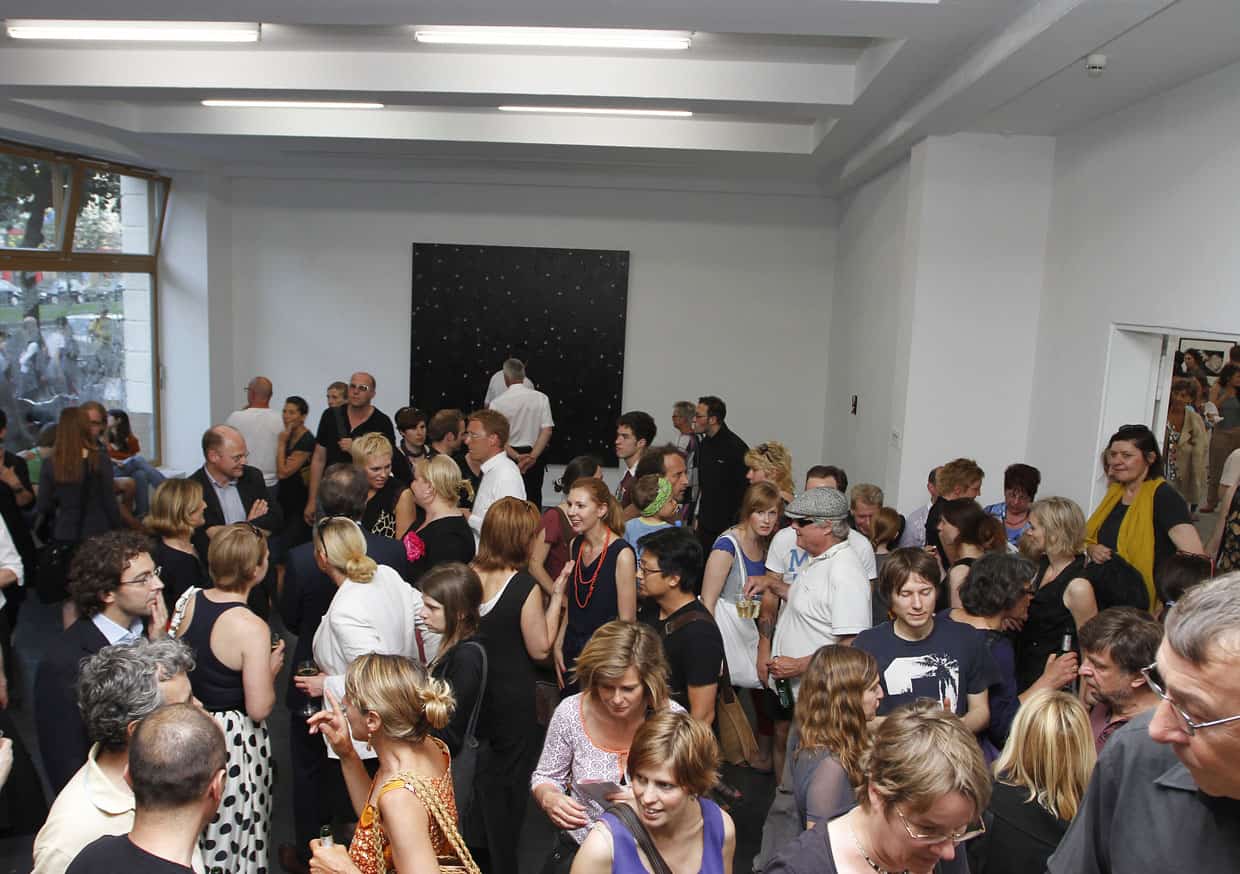KÜNSTLERHAUS
BETHANIEN
1974 – 2010
The Künstlerhaus Bethanien on Mariannenplatz
The history of the Künstlerhaus Bethanien as well as its trademark name are closely linked to the building it occupied on Mariannenplatz in Kreuzberg, the so-called “Central Deaconess Institute and Hospital Bethanien” (Central-Diakonissenanstalt und Krankenhaus Bethanien) commissioned by King Frederic William IV of Prussia in the mid-19th century. “Bethanien” was then a common name for welfare and healthcare facilities, most of which were run by church organisations, as it evoked the Biblical town in which Jesus raised Lazarus from the dead.
In 1974 the defunct hospital was scheduled for demolition, but the opposition of political interest groups sharpened public awareness for the building’s history, thereby paving the way for preservationists to propose a series of redevelopment plans. Among them was Dr Michael Haerdter, the founding director of the Künstlerhaus Bethanien GmbH and its managing director until 2000. Under his leadership the institution grew into an internationally renowned project and presentation platform for contemporary art.
Since 1975 the Künstlerhaus Bethanien has implemented and exhibited hundreds of often complex projects. In the early days, its scope covered a wide range of artistic disciplines, including theatre, dance, visual arts, literature, music, sound art, performance and architecture. Most notably, its international film and theatre directing workshops, which survived until 2001, proved a catalyst for innovation and cultural exchange. To this day the Künstlerhaus Bethanien has been an important steppingstone in the career of nearly 950 artists from around the world, as witness a long list of now famous names.
2010 – TODAY
The Künstlerhaus Bethanien on Kohlfurter-/ Kottbusser Straße
Following the partial squatting of the historic Bethanien building by left-wing autonomists in 2005, which would eventually result in new occupancy plans for the council-owned property, the time had come in 2009 for the Künstlerhaus Bethanien to explore new paths in order to continue its residency and exhibitions programme and maintain both its excellence and scope. Under the leadership of Christoph Tannert, its managing director since 2000, and with the financial support of the Berlin Lottery Foundation (Stiftung Klassenlotterie Berlin), the Künstlerhaus Bethanien was eventually able to relocate within the same district in June 2010. Today the “Bethanien” hosts divers cultural institutions under the label “Kunstquartier Bethanien“.
Künstlerhaus Bethaniens current venue is housed in a former manufacturing building known as the “Light Factory” (Lichtfabrik), located in the heart of the lively neighbourhood connecting the Kreuzberg and Neukölln districts. While offices are located on Kohlfurter Strasse, the public entrance and windowed galleries are facing Kottbusser Strasse. The building, which extends over approximately 10,000 sqm, was refurbished by the real estate investor Nicolas Berggruen with the aim of accommodating a centre for the arts and culture while retaining the site’s historic appearance. Besides the Künstlerhaus Bethanien, it currently houses offices, workshops, small businesses and a private gallery.
The “Lichtfabrik” was founded in 1912 by the brothers Felix and Leo Israel, owners of a successful company specialised in manufacturing lighting products. Designed as a modern factory for nearly 800 workers, with offices for up to 175 staff, it epitomised the characteristic Kreuzberg mix of housing and workplace facilities. In 1927 the Israel-Frister AG was incorporated as the “United Factories for Lighting Fixtures” (Vereinigte Fabriken für Beleuchtungskörper). Felix Israel was a member of the board until 1933, the year the National Socialist Party came to power, prompting him to leave Germany. He would be denaturalised in 1939. The Frister AG/GmbH lived on until 1965, but the fate of the two brothers and their families has not been established. In 2008 the building became the property of the Nicolas Berggruen Holdings GmbH, and after extensive redevelopment was named “Lichtfabrik” to honour the memory of Felix and Leo Israel and act as a reminder of its industrial past.
The “Lichtfabrik” awaits artists and visitors to the “new” Künstlerhaus Bethanien with bigger exhibition spaces, more studios and improved workshop and gallery arrangements – in short, better facilities to support us in our commitment to the artists and their work.
EXHIBITION SPACES
Kottbusser Straße 10
10999 Berlin
Opening hours
Tue – Sun: 2pm – 7pm
STUDIOS & OFFICES
Kohlfurter Straße 41-43
10999 Berlin
Entrance: “Lichtfabrik”, staircase A/green, 1.floor
Opening hours
Mon – Thu: 10am – 5pm
Fr: 10am – 4pm
